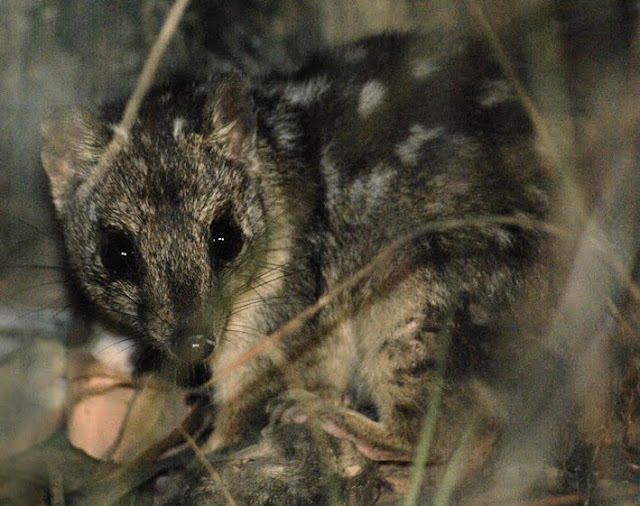Fascinating Facts About Quolls I
Fascinating Facts About Quolls I
Northern Quoll
Image Source:
"Dasyurus hallucatus -Queensland-8" by Wildlife Explorer - Picasa Web Albums. Licensed under CC BY 3.0 via Wikimedia Commons - https://commons.wikimedia.org/wiki/File:Dasyurus_hallucatus_-Queensland-8.jpg#/media/File:Dasyurus_hallucatus_-Queensland-8.jpg
2. The word quoll comes from an aboriginal word from the Cooktown area, Ja-quoll.
3. The spotted-tailed quoll is a marsupial belonging to the genus Dasyurus which includes three other Australian and two New Guinean species.
4. The quolls’ closest living relative is the Tasmanian Devil.
5. The Northern Quoll is Australia’s smallest quoll and is about the size of a small cat. Males are larger than females. Northern Quolls are brown with white spots on their back, rump and head and have a creamy white belly. Their tail measures 20-34 cm and doesn’t usually have spots.
6. Northern Quolls live short lives. Most males die soon after mating and females usually only survive one breeding season. They breed once a year and usually produce six in a litter . They are mature at 11 months.
7. Captain Cook collected quolls along the east coast in 1770, and recorded ‘quoll’ as an Aboriginal name for these animals.
8. In the breeding season, male spotted-tailed quolls may emit a slow, deep growl and a loud, explosive spitting sound (like that of a cat; but enormously magnified).
9. The female’s call is not quite as loud. These calls may have given quolls their fearsome ‘tiger’ reputation.
10. Quolls share communal latrine (toilet) sites which are located in open spaces and may have up to 100 droppings piled up. The sites appear to be used for territory marking and may perform other social functions.
11. The quoll is considered an apex (or top-order) predator, playing an important role in regulating the populations of the other animals that it eats.Because it is at the top of the food chain, quolls occur naturally in low numbers.


Comments
Post a Comment